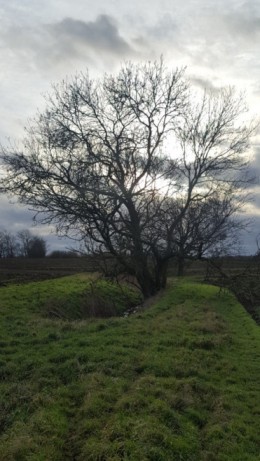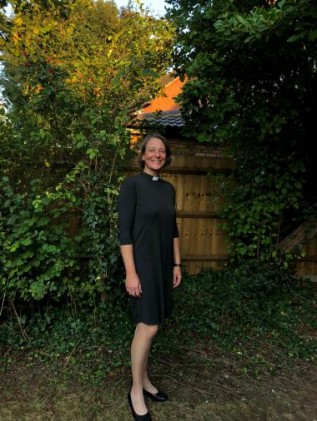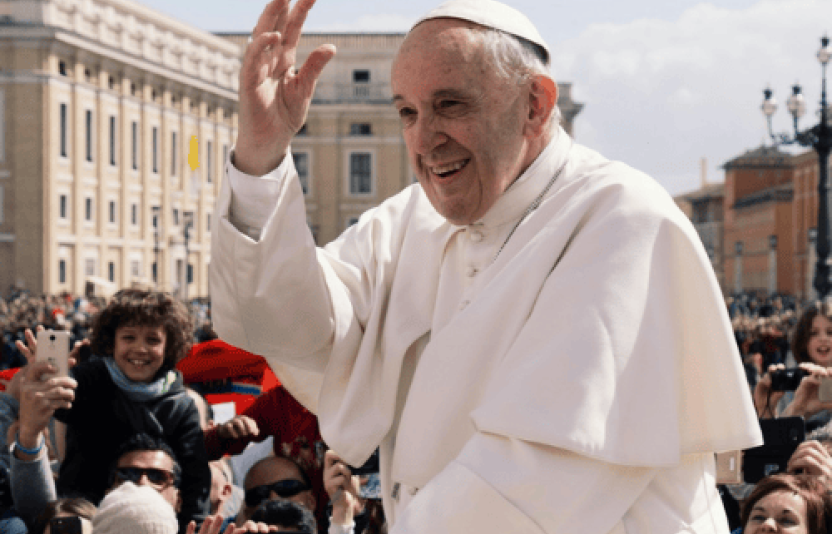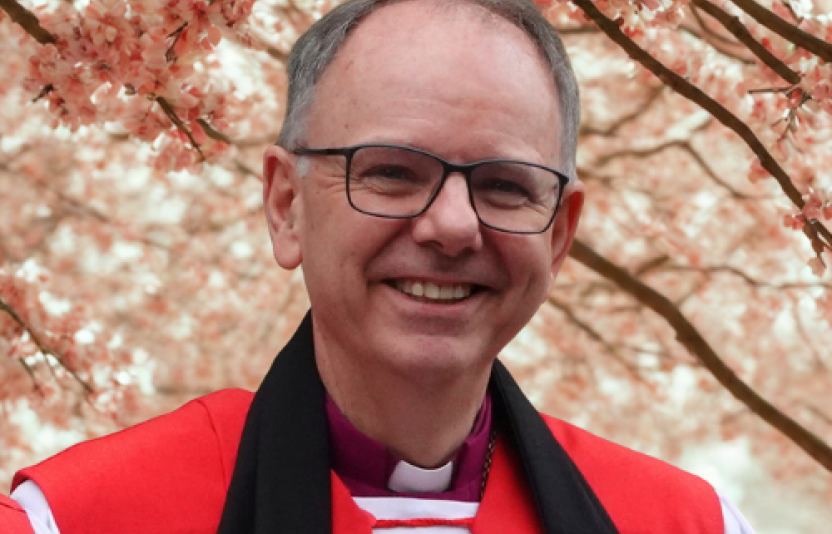Candlemas: The growing time

Picture: A wintering tree near Chelmsford, UK
I am very grateful to The Revd Julia Lacey for picking up the invitation I offered last week to encourage people to write for this blog. Let Julia inspire others! I am particularly grateful as Julia has so clearly offered a ‘European dimension’ to the theme. As Julia mentions in her reflection, she is German by origin and then lived for many years in Annemasse, France. Long associated with the life and worship of Holy Trinity Church, Geneva, and presented as an ordinand by this Church, Julia is now serving her curacy in Chelmsford, UK. The formal date of ‘Candlemas’ or the Feast of the Presentation of Christ is of course February 2. Falling as it does this year midweek, in many churches it is being commemorated this coming Sunday, 31 January. Julia therefore explores the Gospel reading for the Feast of the Presentation, Luke 2.22-40.
Clare Amos, Director of Lay Discipleship
clare.amos@europe.anglican.org
*****
Reflection on the celebration of the Presentation of Christ in the Temple Luke 2.22-40.
Before moving to France I hadn’t given much thought to the feast of the Presentation of Christ in the Temple, or Candlemas as it is probably most widely known.
Rather than a feast it had always seemed to me the end of all things Christmas. In my home in Germany, on this day the Christmas tree and with it all decorations would be taken down and put away. I vaguely remember going once or twice to Mass where new candles would be blessed. But in essence, this day was tinged with sadness. Now the real winter would begin with its interminable run of cloudy and rainy days and spring seemed to be light-years away. The fun as it were lay in the past.
My perception changed when I came to know my friend Isabelle in France who was also our daughter’s nanny for a number of years. No “chandeleur” could go by without Isabelle’s famous pancake feast for all her little charges. And, as Isabelle’s generous nature insisted, parents and grandparents would prolong the feast when they arrived to pick up the children. It was a wonderfully joyous occasion with Isabelle expertly tossing pancakes and smothering them with homemade jams, lots of laughter and shared stories.
When I told Isabelle about my take on Candlemas she was absolutely taken aback: “But… this is the day we celebrate the revelation of Christ to all people! How can you not celebrate?”
Indeed, how could I not? I realized that I had managed to see this moment in the liturgical year in only one dimension, that of looking back. I had completely missed the joyful note of hope that is also part of Candlemas – not to mention the amazing moment it depicts.
It was much like looking at a tree in winter and only seeing bare branches, dead leaves and last year’s decaying fruit, disregarding completely the strength and life in its roots. Or indeed much like what society often thinks of the “elderly”, people like Anna and Simeon in the Gospel reading, merely waiting for the end of their lives.
But of course the Gospel is the Good News because it challenges us to a holistic outlook on all life.
In that holistic view, Candlemas becomes a crucial moment in its most literal sense – a kind of crossroads to which all roads lead and from which all roads depart. So looking back is actually not such a bad thing to do on Candlemas.
After all Jesus was taken to the Temple by his parents to fulfil the ancient requirement of “redeeming” the first-born son who otherwise would have been dedicated to the Lord. This tradition points us straight back to the time of exile in Egypt and is intrinsically linked with the Exodus, the event that enduringly shaped the identity of the Jewish people. It is important for Christians not to forget the roots of our faith and to remember that we continue on a journey with God that began far back in time. However, while the Jewish custom of Pidyon ha’Ben might be understood as looking backwards remembering the saving grace of God, this particular moment when Mary and Joseph arrive in the Temple with Jesus holds an urgent forward movement.
Both Simeon and Anna, despite their age, are agents of the forward movement.
Simeon is a tzaddik, a righteous man who is fully committed to all requirements for a good Jewish life, and he has been promised to see the Messiah before he dies. Simeon has been living his life with one foot firmly rooted in history and with the other pointing forward – not to a distant or utopian future but to a very real arrival of the Saviour within his earthly life.
When he meets Jesus he recognizes that the ancient promise has finally become reality and that this means peace, not only for him but for all people.
Simeon has been set free. He can let go of his life-long task reminding others of the promised coming of the Messiah.
Anna comes from a different direction. Her personal journey has led her to continuous prayer in the Temple, prayer that most certainly was inspired through Scripture – another way of being rooted in the history of God with His people.
She is a real connoisseur of God’s word, one might say an aficionado. So much so that she has become a prophetess, an interpreter of God’s word who speaks of things to come.
It is no surprise then that it is Anna who speaks about the child Jesus to everyone.
She takes Simeon’s very personal, almost intimate recognition and carries it out to all people.
Simeon and Anna complement each other, despite their visible differences. Simeon is presumably well respected for his righteousness, he has standing. Anna is a widow, therefore on the margins of society, and probably seen as rather eccentric in all her praying and fasting. Obviously they represent different genders and with that different roles in society. They do however have in common that they are old. And this being old is more than anecdotal. It drives home the importance of rootedness in the past, the importance of their journeys to this crossroads moment in the Temple.
Two different journeys that have been made looking forward in certain hope and their paths cross here at this crucial point in time. Although two different and distinctive people they come together and become thus a metaphor for God’s promise that all people, women and men, rich and poor, respected and marginalised, will come together to worship the one God. This journey is still to be made.
Anna and Simeon have carried the baton so far, now they are handing it on to all who look for salvation – to all believers – to us.
How indeed could we not celebrate this wonderful moment when that Olympic torch of faith is being handed over to us to be carried out for all the world to see God’s bountiful goodness and His everlasting covenant with us?
Let’s be like Simeon and Anna, trees of righteousness, with roots firmly grown so that we can overcome winters and grow fresh leaves and this year’s as well as next year’s fruits. Let us take up the challenge of becoming light-bearers in a world that might not understand but still needs firm hope, starting out from the crossroads of recognition at Candlemas ever deeper into the Kingdom of God.
And, as a clin d’oeil to this blog’s location, this might well include carrying a torch (pun intended) for this old-fashioned idea of a united Europe where people can move freely and can prosper in an inclusive society.
Julia Lacey
*****

Picture: Julia in her garden last autumn
Candlemas is sometimes spoken of as the day when the Church’s year changes direction. We stop looking back to Christmas and begin to look forward to Lent and Good Friday and Easter. It’s the growing time of the year, a season that will offer us plenty of opportunity to practise and grow in wisdom, so that, like Anna and Simeon, we recognise the moments of God’s coming and rejoice in God’s love every day. (Anne Lewin)


